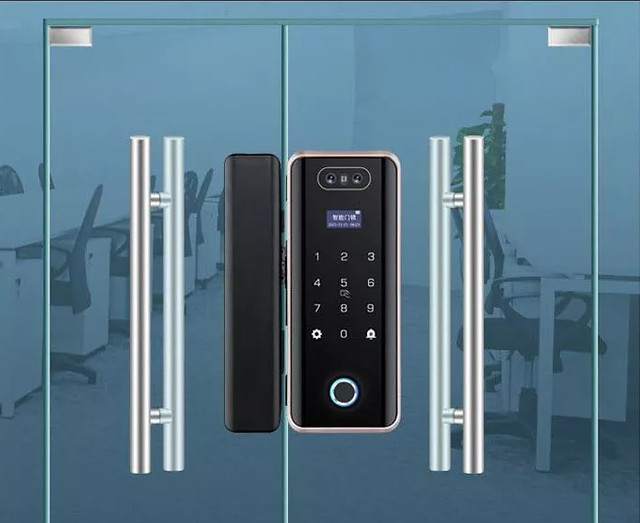Power Over Ethernet (PoE) Security Cameras
When deploying security cameras on your worksite, you need to consider various features. One such feature is power over Ethernet (PoE).
PoE cameras use an Ethernet data cable to carry both power and network connections, eliminating the need for separate cables. This simplifies installation and reduces wire clutter. It also offers a number of benefits to your business.
Benefits of PoE
The main benefit of using a PoE security camera system is that it eliminates the need for separate power cords and outlets. This makes it easier to set up cameras in locations that were previously out of reach or difficult to wire.
Additionally, PoE devices feature power management and protection systems that stabilize the voltage of the connection and prevent over- or under-powering. This can extend the lifespan and improve the performance of connected devices.
Compared to traditional power-wired security cameras, PoE cameras are less expensive and faster to install. They require a single network cable to provide power and data, making it easy to connect them to an IT infrastructure.
Additionally, since PoE cameras use the internet for data transmission, they do not consume large amounts of bandwidth. They also use upload bandwidth, rather than download bandwidth, to record video and images, so they do not interfere with your online activities. If you choose a 4K PoE camera, however, it will use more storage space than a standard IP camera.
Another benefit of using a PoE camera is that it can help you improve poe security camera productivity and operations by keeping an eye on your physical assets. For example, if a manufacturing line is experiencing high rates of rejections, you can monitor the situation from your office and quickly make adjustments.
Installation
When it comes to installing a security camera system, the setup process can be overwhelming. Fortunately, advanced technologies make surveillance systems more affordable and user-friendly. Power over Ethernet (PoE) technology reduces the amount of cabling required, simplifying the installation process.
Unlike traditional security cameras, which are tethered to electrical outlets, PoE security cameras draw power from a switch or injector over an ethernet cable. This eliminates the need for multiple power cords and outlets, allowing you to install the camera closer to your home or office without sacrificing quality video footage.
The centralized power source also simplifies the installation and maintenance of your system. PoE switches are designed to only supply power when a connected device requires it. Moreover, PoE power delivery is regulated to prevent overload and over-powering.
To get started with your installation, begin by determining the area you would like to monitor. Then, choose the appropriate locations for your camera. Carefully consider factors like coverage area, lighting conditions, and accessibility. Once you have chosen the location of your cameras, Solar Dual Lens WiFi Camera secure them to the wall using the brackets provided by the manufacturer. Next, run an Ethernet cable from each camera to the PoE switch or injector. Finally, connect the switch to your network router or NVR (Network Video Recorder) with another Ethernet cable. Now that your camera is connected to a power source and a network connection, you can access its settings through a web browser or dedicated software.
Video Quality
Known as IP or network security cameras, these systems use computer networking cables and protocols to transmit video digitally over a local area network (LAN) to NVRs or computers. The technology behind PoE enables these devices to get power and data from a single cable, eliminating the need for additional power sources and reducing overall system costs.
Compared to older analog systems, a PoE surveillance camera can provide leaps and bounds better video quality. These cameras have internal computer processors that translate analog video into a digital HD signal that can be recorded onto a hard drive for future review. A digital signal also eliminates the risk of pixelation or degradation over time, which can happen when using analog cameras with coax cable connections.
When selecting a PoE surveillance camera, look for a higher resolution and frame rate to ensure the images are crisp and clear. Also consider whether the camera offers two-way audio so you can speak to people who visit your property and deter vandalism or crime before it occurs.
In addition to improved image quality, PoE cameras offer several other benefits. The ability to deliver both data and power over a single network cable significantly reduces infrastructure and labor costs for installation. Additionally, PoE switches have activity lights that alert you if a port is down or experiencing problems.
Storage
Unlike older analog systems that require separate cables for power and data transmission, PoE security cameras can transmit both over the same wire. This reduces the amount of wiring required and makes installation much easier. In addition to the ease of installation, a 4K PoE security camera system can offer advanced features such as high resolution, great night vision, durability, motion detection, and ample storage options to keep your property secure.
One important aspect to consider when choosing a security camera is how long you want it to retain recordings. Different camera models can have differing onboard storage capacities, and how quickly they run out of space can be determined by their video specifications, recording frame rate, and how often they record. Typically, the best option is to purchase a system that comes with an NVR or DVR that will retain all of your footage on a hard drive.
Alternatively, some IP cameras come with built-in local storage on the device. This is usually limited to a few gigabytes and can only be accessed through the camera’s app with a Wi-Fi connection. However, this offers some benefits in terms of reliability and connectivity since the recordings don’t have to be transmitted across networks, which can be subject to unreliable or crowded connections. This type of local storage is also less prone to physical tampering and other potential risks, as it is housed on the device itself.



